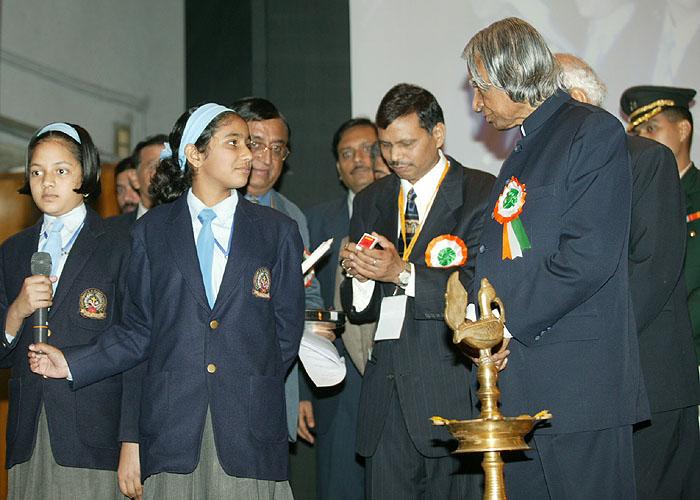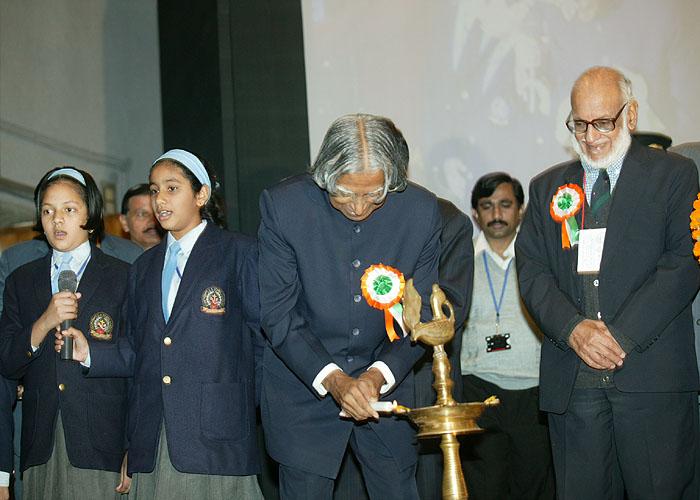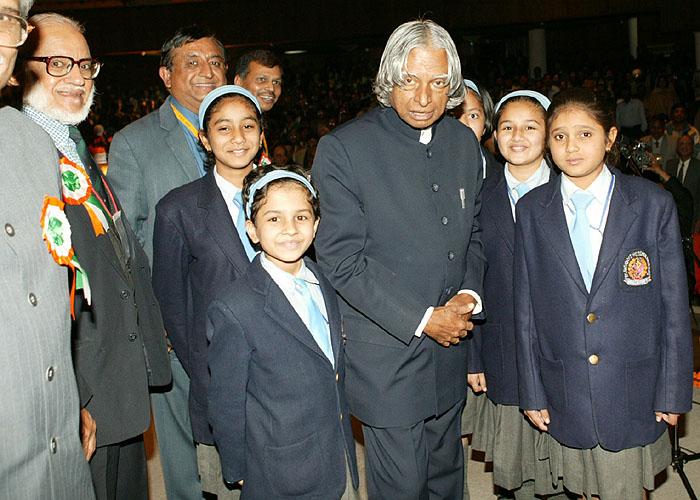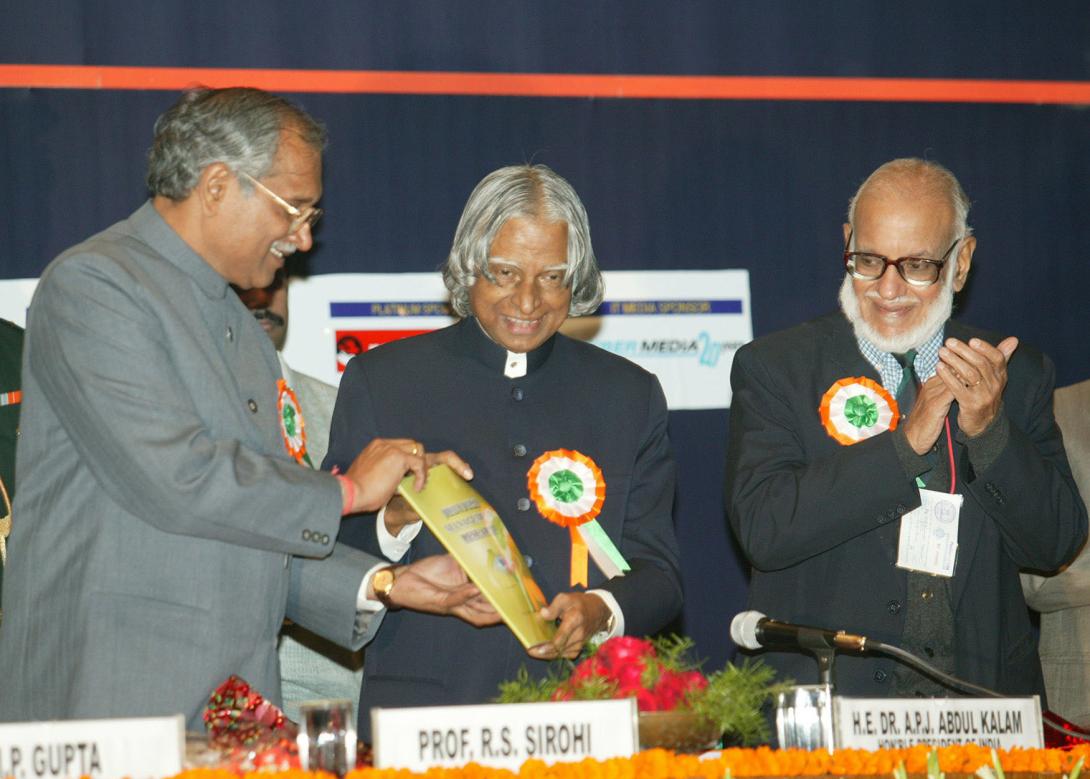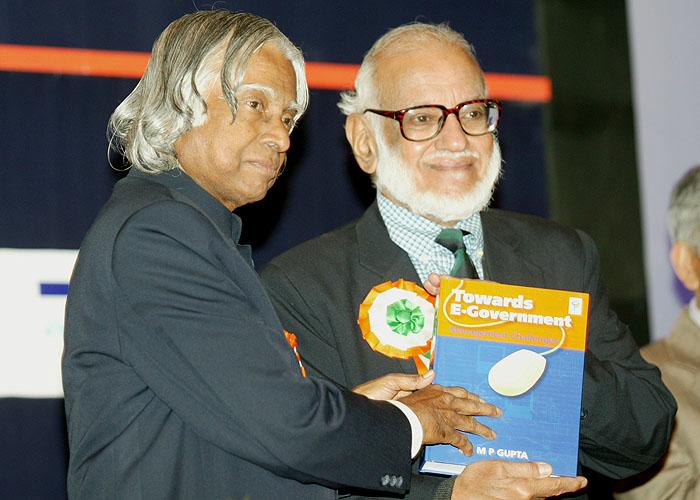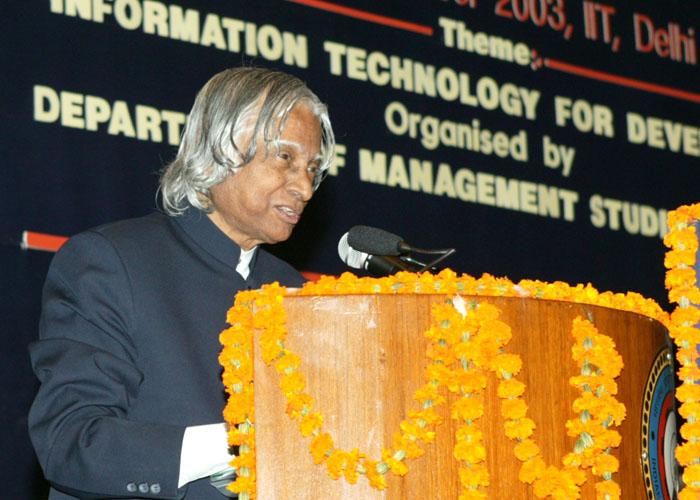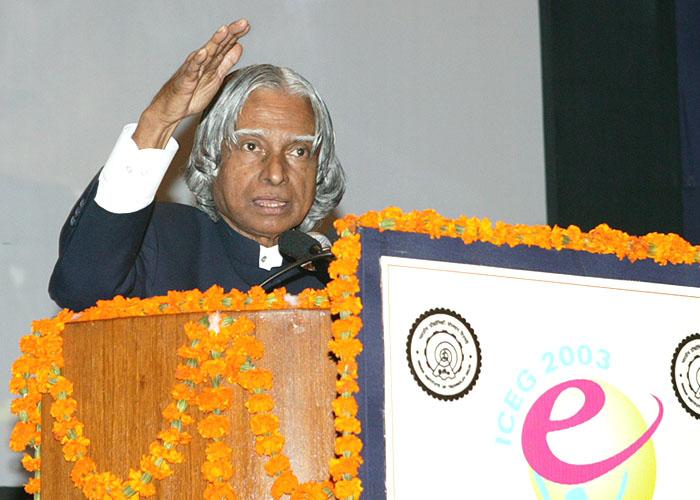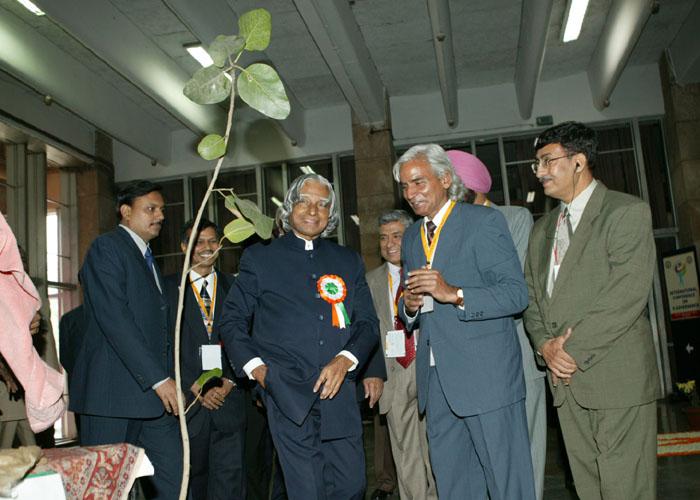Inaugurational Address at the International Conference on E-governance (ICEG 2003)
IIT, New Delhi : 18-12-2003
Citizen centric e-Governance: Technology and Management policy
I am delighted to inaugurate the International conference on e-Governance at Indian Institute of Technology, New Delhi. I am happy to see that 126 papers are being published in two volumes entitled "Towards E-Government - Management Challenges" and "Promise of E-Governance - Operational Challenges" from the international and national contributions. I had an opportunity to go through some of the interesting papers. I greet all the national and international delegates, who are contributing substantially to bring the change and innovation in the form of governance electronically. I was thinking what topic I can share with you. I would like to discuss about "Citizen Centric e-Governance: Technology and Management Policy".
Good governance is being recognised as an important goal by many countries across the world. They have taken up specific initiatives for open government. Freedom of information is being redefined and supported by detailed guidelines. The internet revolution has proved to be a powerful tool for good governance initiatives. An important dimension of the internet potential is the possibility of providing services any time anywhere. Along with this there is a conscious effort to put the citizen as the centre of focus of the governance. Citizens are being perceived as customers and clients. E-governance has to be citizen friendly. Delivery of services to citizens is considered as a primary function of the government. Particularly the democratic nation of the billion people like India, e-Governance should enable seamless access to information and seamless flow of information across the state and central government in the federal setup.
No country has so far implemented an e-governance system for one billion people. It is big challenge before us.
Typical scenario
I visualize an election scenario, where a candidate files his nomination from a particular constituency. Immediately the election officer verifies his/her authenticity from the national citizen ID database through multifactor authentication, through a multipurpose Citizen ID card. His/her civic consciousness and citizenship behaviour comes from the police crime record. His property record comes from the registration of land authority across the country. His income and wealth resources come from the income-tax department, and other sources. His education credentials come from the university records. His track record of employment comes from various employers with whom he had worked. His credit history comes form various credit institutions like banks. His legal track records come from the judicial system.
All the details arrive at the computer terminal of the election officer within few minutes automatically by the act of egovernance software agents which crawls across the various state and central government web services directories through the network and collects the information automatically and presents the facts in real-time with out any bias. Artificial intelligence software analyses his credentials and gives a rating on how successful he will be as a politician. Election officer sitting at the remote block of the country decides on the spot and the election process starts. All the voters vote from their home through virtual polling booths. Is it a dream? Is it possible? If possible, when shall we have it? Can we provide good governance to our one billion people? Can the governance speed up the delivery system? Can the governance differentiate between genuine transactions and spurious transaction? Can the governance ensure immediate action for the genuine cases which satisfies the check list for a particular service and pend the action on spurious transactions? Can this be done by e-governance at a cost affordable by our nation? If we have this system implemented then I call this as a true e-Governance system for the citizen.
Challenges in e-Governance
I am trying to seek an answer for these questions by asking another set of questions? Do we have a required e-Governance framework? Do we have a National Citizen database which will be the primary unit of data for all governance vertical and horizontal applications across the state and central governments? Do we have standards for the exchange of secure information with non-repudiation, across the state and central government departments seamlessly? Do we have a secure delivery framework by means of virtual private network connecting across the state and central government departments? Do we have datacentres in centre and states to handle the departmental workflow automation, collaboration, interaction, exchange of information with authentication? We should have our administrative systems empowered and reformed which accelerate the decision making? When will the entire administrative bodies be able to contribute more for the national development rather than being entangled in the files? I have just visualized the scenario? Let us try to find an answer to each of the above questions towards providing good and smart governance to our one billion people.
Concept of e-Governance
In summary, I visualize e-Governance as defined below:
"A transparent smart e-governance with seamless access, secure and authentic flow of information crossing the inter-departmental barrier and providing a fair and unbiased service to the citizen."
I have always been in my life an advocate of using technology for the betterment of our society. E-Governance is one such opportunity. I want all of you to remember, the technology is a double edged sword. If we don't have an implementation plan from concept to completion, in less than one or two years, technology will become expensive and we will not be able to reap the benefits. Hence I urge you to implement the e-governance process extremely fast. While you are doing this, you must also have a quantitative measure on the impact of e-governance measure on the society. Every year, you must be able to produce a number, which states the number of people who have been touched by the benefits of e-governance.
Transparency in e-Governance
India is transforming into a transparent society. It is essential that government functions which have interfaces or interactions with public especially where the state and central functionaries have to serve or support even correct the citizens, such functions have to be done through the tools of information technology and communication. This means, software have to be written to codify the rules, procedures and other related government functions and public access should be through IT. Then the government functions can provide equal access to all based on predetermined rules and even with rules to govern exception being done in a transparent manner. Since India has the core competence in information technology and communication, the possibility of success to bringing in transparency in administration and management through e-commerce and e-business leading to e-governance, is definitely possible. Actions have to be initiated in a mission mode. Appropriate legal instrument to provide government power to such mode of interactions should also be done simultaneously.
National ID
The primary data requirement for the effective e-Governance is the National Citizen ID Card. It should be a multipurpose secured and authentic ID card. This card should be akin to the Xerox copy of the individual with the multifactor authentication such as photograph, biometrics - finger print, iris-based systems and digital signature. India with a population of one billion people should be concerned about providing this card to the citizens at a cost effective basis. Hence there is a need to select the right technology for the preparation of the card and online issue of the card also needs to be determined urgently. This challenge must be taken up by the consortium of public and private industries, academic institutions with the Government. Presently the government is considering the discussion of a bill for introducing multipurpose Citizen ID card.
E-Governance Initiatives
Several state governments made significant use of IT in government, integration of IT government services and their electronic delivery, some of the examples are Gyandoot in Madhyapradesh, e-Seva in Andrapradesh, Friends in Kerala. In Andra Pradesh, Kerala, Maharastra, Rajastan and Tamilnadu now provide on line registration of property transaction. The NCT of Delhi has recently started electronic delivery of registration of birth and death. Karnataka has fully deployed a computer application for the issue of land records under the bhoomi project, Tamilnadu has implemented e-Rasi project. In Karnataka computer application captures every single transaction at all districts and Taluk treasuries. Some of the states have developed application for Chief Minister Information System for monitoring activities covering developmental programme, redressing public grievances and disaster management systems. India's first VSAT based communication network VIDYUDNET, supports real-time data applications for power generation and distribution. Some of these systems can be replicated and used by other states to avoid the duplication of efforts and to speed up the implementation process.
India has already established successful networks like NICNET for connecting state and central government offices, ERNET to connect Educational and Research institutions, RAILNET to connect Railway networks, Airline network which connects the air ticket reservation and its services, using the minimum network bandwidth and provides minimum services to the government units for the last 10 to 15 years. And also has a multitude of private entrepreneurs providing services. For example, these networks are established for the specific purposes and address the vertical domains like government, education and research institutions, railways; these modes are working satisfactorily and serve the purpose to those domain requirements. Railway network and its Railway portal which provides the reservation, cancellations and other services is the good and big working model in the country. Time has come to integrate the functions of all the networks in a seamless way and provide an internet exchange in the country much the same way our telephone networks of multiple service providers have been integrated. The inter-departmental communication is required to provide citizen centric services such as interaction, collaboration and transaction with workflow.
These are the islands of successes. There are paths, but they are disjointed. Everywhere there is a computerization but they are not interoperable. There are web based services but again coupled with manual processes which leads to delay.
Conclusion
A comprehensive e-Governance framework needs to be evolved. This frame work encompasses the following:
1. Establishment of e-Governance Commission or empowered Board
2. Establishment of e-Governance GRID across the state and centre. Setting up of the Horizontal GRID across the state governments and interconnecting the Horizontal GRIDS to the Vertical Central GRID.
3. Setting up of e-Governance DATA Centre at the Centre and State Level and real time updation of data from various units of the government.
4. Setting up a Multipurpose, secure, authentic national citizen-ID database as the primary data for all the e-governance services and online issue of Citizen ID card seamlessly.
5. Electronic connectivity through dedicated Broadband, Virtual Private Network (VPN) based connectivity from the Centre to State, State to District and District to Block level and Block to village level through the options like wireless, microwave and VSAT. PURA scheme provides an impetus to electronic and knowledge connectivity.
6. Create a language independent operating systems, databases, application servers, mail servers etc., in the Indian languages.
7. Ninety percent of work concerning e-governance should be outsourced and government should only manage the Data Centre and maintain it for on-line application.
These are the challenges that are before us; the conference can discuss and bring out a comprehensive set of recommendations for the effective implementation across the states and central government.
Today's technology in computers and communication has made the death of time and distance, because the computer is extremely fast and the technology is further improving everything that can be solved with in the time you have. The network is extremely fast there is no need to worry about the distance. There is a new paradigm in the Democratized information system "anytime anywhere the information can be accessed".
I wish the conference a success.

